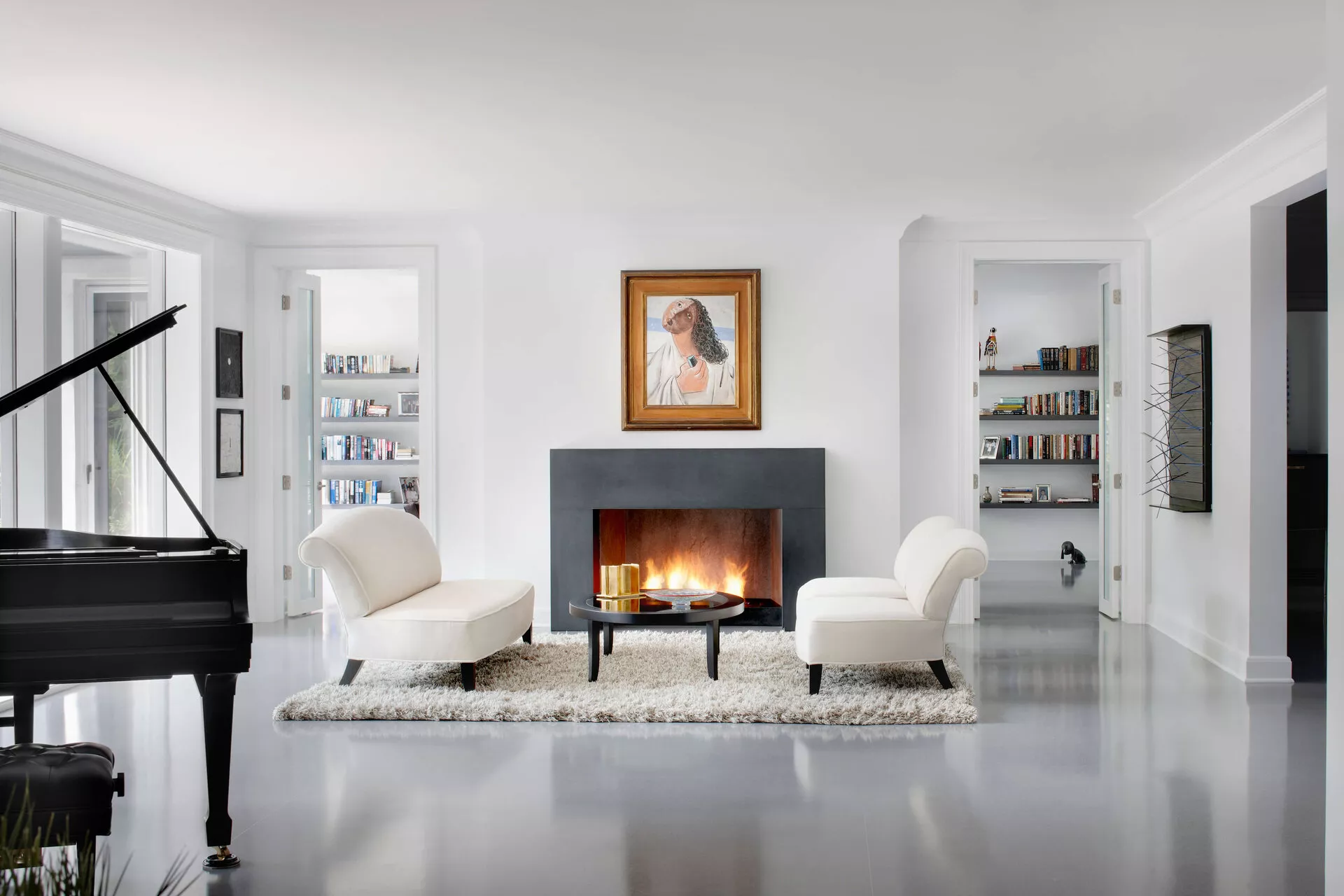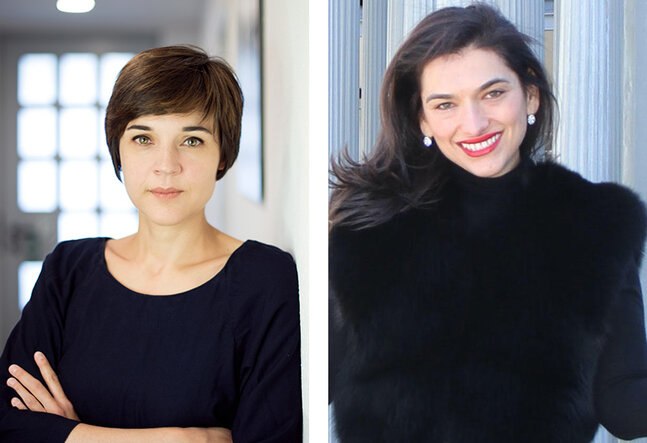
1858 Ltd, On the Art of Collecting
1858 Ltd is an international advisory company and a partner of Société Générale Private Banking. 1858 Ltd offers an impartial expertise and serves clients in the field of art including art wealth management, classic cars, wine, watches and fashion collaborations. Viola Raikhel-Bolot, co-Founder of 1858 Ltd and Director of International Art Advisory and Céline Fressart, Senior Art Advisor and Head of Special Project walk us through the process of collecting, from creating a collection to managing it, starting by introducing us to where it all starts: the collector. Interview with Laurent Issaurat, Head of Art Advisory at Societe Generale Private Banking, in France.

Celine Fressart and Viola Raikhel-Bolot
What is a collector?
Céline Fressart: According to the Oxford Dictionary, a collector is “a person who collects things, either as a hobby or as a job”. So this means that anybody with the passion and means can become a collector… The collecting habit is truly universal and timeless.
What are the different types of collectors?
Viola Raikhel-Bolot: There are many types of collectors, each brings their own passion and sensibility to one of the world’s most unique markets and when passion meets personality, the results can vary deeply. From an early stage to seasoned collector, there is much excitement in collecting and is what inspires others to join the ranks. Some will focus on a specific medium (such as photography or monumental sculpture), others on a geography (African tribal or contemporary Chinese), a movement (Women sculptors or Impressionist painters) or even on a single brand. When starting a collection, it can be very useful to define some ‘guiding principles’, that will determine its special ‘flavor’, but that may also evolve over time, similarly to the level of resources allocated to one’s passion.
How to buy?
CF: As simply as buying anything else, by sticking to the ‘spirit’ of the collection and utilising the same market intelligence which aids your other buying decisions. Do not be fooled by anyone who explains otherwise. Whether you are buying from a gallery, auction house, or directly from the artist, make sure you ask yourself the right questions: is the seller trustworthy? is this work authentic? does it come with provenance I can trace? is it well priced in relation to the market?
How should a collection be displayed?
VRB: I liken it to bringing a baby home from the hospital for the first time. Once your art works are home with you it is now your obligation to protect them all the while enjoying them too. Care for them by taking the necessary measures to keep them safe: avoid direct sunlight, fire places, bathrooms and kitchens... If you want to show your collection, there are nowadays many online platforms allowing you to do this with confidentiality. Social networks we would suggest are not one of them. When considering showing works on line, think of the impact on security if your identity is linked and also the risk of exposing the work too widely if you plan to sell. When we sell works for clients, we put in place a bespoke selling strategy which typically avoids online exposure especially when we manage private sales where discretion is paramount. Other solutions to displaying your works can be the making and publishing of academic research or Coffee Table books, which we have already done for some of our clients. And of course, exhibiting in a museum is another option.
How to enhance a collection?
CF: Make sure to monitor the value and the condition of your works on a regular basis – or ask a professional like us to do so. This will ensure the works are always protected should anything happen. Undertake some research on your pieces, document them to highlight what makes them so unique. Share the story behind your collecting process, and lend your works to exhibitions, even if in the nearby museum. This is all beneficial to your collection.
What does 'collection management' encompass?
VRB: It is a service we currently provide for collectors in the Americas, Europe and Australia, enhancing the collecting process in every possible way with state of the art inventory systems, ongoing insurance strategies, risk assessment, valuation reporting, conservation, framing and pre disaster planning. Collection management also includes facilitating transactions should the collector wish to buy or sell, tracking all movements in and out of the collection, in order to preserve and optimise its value. In a nutshell, as collection managers we are here to help the collector enjoy the art work and collecting process while we manage the more practical side.
Are there any risks lending to museums?
CF: Probably less than leaving the piece on your wall, provided insurance coverage and logistics are adequate, which needs to be carefully checked and monitored. As loans are vital to Museums, they will put every measure in place so that the work benefits from the optimum conditions : the artwork is usually insured by the museum, taken care of by professional handlers, becomes the focus of research, studies and publication, enhancing the profile of the work (and its value by the same token). Of course, we hear about the odd story of an artwork being stolen from a museum, or damaged by a rogue visitor but these instances are extremely rare.
Some piece of advice to start a collection?
VRB: Find a mentor or advisor in the art world you can trust that is not motivated to sell you anything!
How to transmit to the next generation?
CF: If the passion is shared, the transmission of knowledge about the collection and its market will have naturally occurred. But from our experience, a passion is very personal and the majority of collectors prefer to sell their collectibles before it is too late, or in rare occurrences, give their collections to museums. A sale allows the next generation to start a collection of their own and not bear the burden of dealing with unloved items, sometimes items with provenance issues, in the midst of a painful bereavement linked with higher priorities than their parents’ misunderstood hobbies. 1858 Ltd. works with new and experienced collectors globally to mitigate risk and ensure all areas of collecting are a pleasure.
Which collectors are inspiring you?
VRB: As a woman in the art world, one of my greatest inspirations has always been Farah Pahlavi, the last Empress of Iran. My fascination with her led me on an extraordinary journey of research and discovery and to co-author Iran Modern: The Empress of Art - the ultimate account of her life as a collector and the enduring power of art. Prior to the 1979 revolution in Iran, she amassed the most important collection of Western Modern and Contemporary Art outside of the West. With a keen eye—and working with Sotheby’s, Christie’s, and the Met—the empress was able to amass one of the world’s greatest collections of modern art for her country, including works by van Gogh, Picasso, Bacon, and de Kooning. She also empowered a generation of young Iranian artists, visited the studios of artists like Henry Moore and Chagall, and commissioned works directly from a young Andy Warhol, who visited the Royal Palace, in the name of establishing her country as a cultural vanguard. Then, in 1979, the unimaginable happened, and the Iran that emerged after the Revolution changed everything. But since then, even in exile she continues to support artists in Iran and motivate them to create. Such is the power of art to determine the legacy of a woman and a collection.
CA391/November/23




